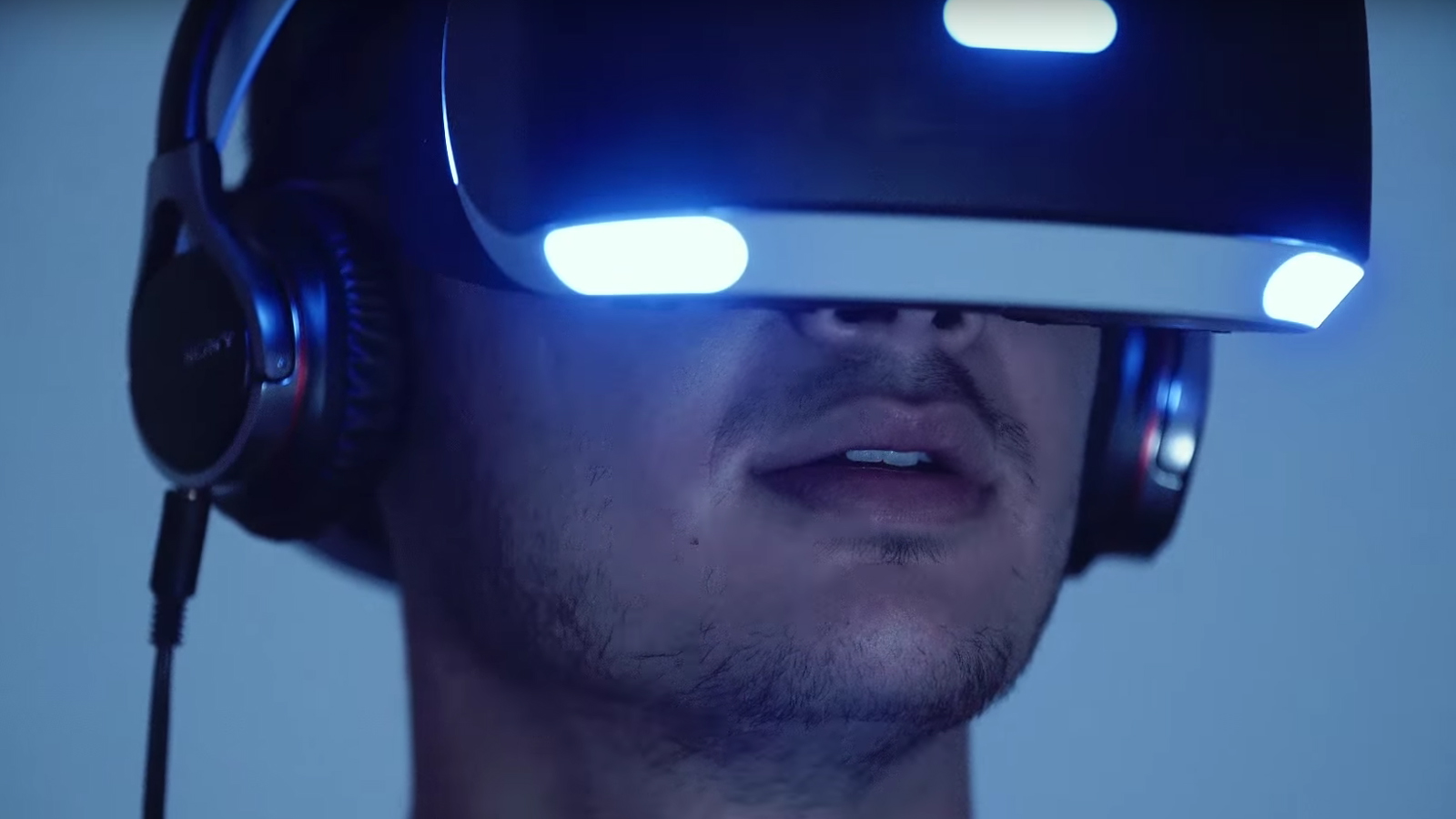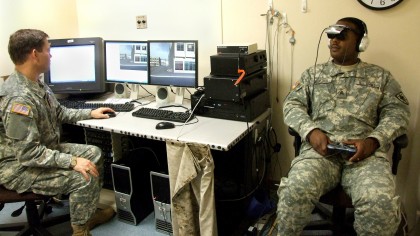Virtual trauma: could home VR affect PTSD sufferers?
Balancing risk with reward

Thanks to the rise of mobile virtual reality headsets like the Samsung Gear VR and the relatively inexpensive but extremely accessible console-powered PlayStation VR, more people than ever have access to virtual reality headsets and content in the comfort of their own homes.
Before now the technology has been used in many interesting and positive ways, including by medical professionals to treat psychological conditions such as PTSD.
Having made significant contributions to medical treatments, widespread direct access to VR could now drastically change the way we consume films, games, and even social media. Before we dive into all of the exciting content opportunities that VR is going to bring, though, there are a few things it might be wise to consider.
We may be using it to consume media with which we’re already quite familiar, but VR is an relatively new platform. Though the technology has been in development for a while and we've seen it used beneficially, as far as widespread consumer consumption goes it’s still incredibly new and unfamiliar.
Unfamiliar territory
A VR headset is more than just a screen that sits close to your face. I mean, it is, but its purpose is to completely immerse you in a virtual world, rather than allow you to view it through the window of a TV screen.
Bearing this difference in intended experience in mind, it’s worth asking whether we should be giving more thought to the content we produce for these increasingly accessible headsets and the effect this different method of consumption could have.
For years now, VR has been used to help people overcome fears and in the treatment of conditions such as PTSD, and it’s proven to be extremely successful.
Sign up for breaking news, reviews, opinion, top tech deals, and more.
This is because the VR headset is used to enhance an already scientifically proven method of treatment: exposure therapy. Patients are exposed to situations through the VR headset which resemble what they were traumatised by or are fearful of, and by doing this repeatedly the memory loses its emotional potency.
This process, sometimes called habituation, can take a long time and is always done in controlled environments with trained professionals who can support the patient should they become severely distressed.

This raises a question: if someone with PTSD can be triggered by a VR experience safely in a controlled environment, what happens if someone with latent PTSD is triggered in the uncontrolled and unsupervised environment of their own home?
To get a better idea of whether this is something that’s even likely we spoke to psychologist Albert ‘Skip’ Rizzo, who told us that it's not impossible and is certainly something worth monitoring.
As director for medical virtual reality at the USC Institute for Creative Technologies, Rizzo has used virtual reality in treatments himself and his work using virtual reality-based exposure therapy to treat PTSD received the American Psychological Association’s 2010 Award for Outstanding Contributions to the Treatment of Trauma.
When we asked Professor Rizzo what it is about VR that makes it such an effective aid to exposure therapy, he told us it’s because “some people don’t really imagine the trauma in vivid detail enough to activate the emotions.”
VR offers those who struggle with this a way to access vivid and tailored situations, enabling exposure therapy to help an even larger number of people. Professor Rizzo said that even though on some level patients know that what they’re seeing isn’t real “their brain reacts as if it’s real.”
Considering this, could home VR experiences pose some danger to an individual who has experienced trauma?
“Unfortunately”, says Rizzo, “we don’t yet have any really good science or any really good research to confirm this but intuitively I would say that.”
Insufficient science
Rizzo does, however, add the caveat that while therapy situations are created using game technology, they certainly aren’t games. This is an important distinction; games are what Rizzo calls “a cathartic revenge fantasy” that allow an essentially “bulletproof” player to “lay waste” to a game world and receive points and rewards for it.
Therapy situations, however, are “fundamentally different in that we’re putting people in things that really activate their previous fear and anxiety.” He thinks this is an important difference but adds that, regardless, “you always have to worry about people getting triggered."
Rizzo recalled a conversation he had with a war veteran who said that when they first came back from service on July 1, they didn’t know they had any psychological issues at all. Then the 4th of July rolled around and the veteran told him that the first time she heard a lot of fireworks going off that day she “jumped to the floor and freaked out.”
“That kind of uncontrolled exposure like what you’re saying with the video game could trigger people but we just don’t have any research that really studies it and we should, we really should.”
In 2015, Sony removed a suicide option from its VR game, Heist. Players were given the option to turn their gun on themselves but Shuhei Yoshida said this option was removed as it was considered “wrong” and “too stressful” for players. “The medium is so powerful” he said, “we need to be careful with what we provide.”
"The medium is so powerful [...] we need to be careful with what we provide"
Shuhei Yoshida
Whether or not this scene would have triggered anyone isn’t clear because it never made it to public play, but it’s unlikely its inclusion would have been looked on positively. For a flourishing technology that requires the public to embrace it to have any hope of becoming a mainstream commercial success, appearance is everything. Sony might have made the safe decision, but it was probably the right one.
According to Rizzo “this is going to be an issue more and more as gaming starts to become more immersive with VR.”
Though the immersion made possible by VR has proven to have positive outcomes for mental health treatment “you also have to accept that there is that potential that because someone’s immersed that there could be some ill effect.”
It might be the case that on some level people interacting with these VR experiences know they’re not real but something in the brain is still activated by them. Rizzo references a VR experience that accompanied the 2015 film The Walk, a biographical drama about French high-wire artist Philippe Petit's walk between the Twin Towers of the World Trade Center, as an example of this.
The VR experience, he says, places the headset wearer in the role of Petit and tasks them with recreating his walk between the towers. “I know people that would not step out even though they know they’re on solid ground” recalled Rizzo, adding that even people who didn’t think they had a fear of heights were affected; “It activates something in the brain that makes it fearful and scary.”
Risk versus reward
Despite the risks, Rizzo doesn’t think the answer is censorship. Instead, he says the most sensible thing to do is to apply fair and relevant warnings to the content just as we do with our films and games already. “This”, he says, “is about as far as it can go” adding “I'm a true believer that VR will produce more positive good than the negative but we just have to watch out.”
As VR continues to grow as a platform there are of course going to be reprehensible applications developed. Really it seems that the best and most measured thing we can do is keep a close eye on the kinds of content we develop and the reactions it receives, and warn against anything that has the potential to be truly harmful or unhealthy. It's highly likely, though, that we're going to see new moral and ethical lines drawn in gaming and film as a result.
“I'm a true believer that VR will produce more positive good than the negative but we just have to watch out.”
Professor Albert Rizzo
Before we secure more scientific evidence of risks, anything as extreme as censorship has the potential to stunt the development of what could be an incredibly exciting new platform.
It’s in the very nature of any new technology to have both positive and negative capabilities, but in the hands of medical professionals VR has proven to bring some incredible good to the lives of those who use it and that can’t be dismissed.
As research from those such as Professor Rizzo continues to flourish, we should only see the number of positive applications for VR increase. All we can hope to do is encourage the good to flourish and try to limit the bad.

Emma Boyle is TechRadar’s ex-Gaming Editor, and is now a content developer and freelance journalist. She has written for magazines and websites including T3, Stuff and The Independent. Emma currently works as a Content Developer in Edinburgh.